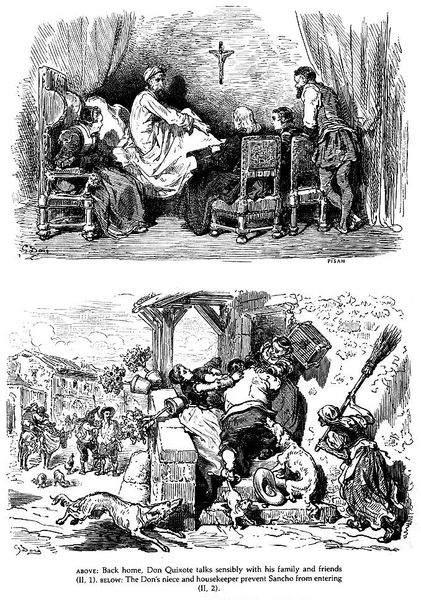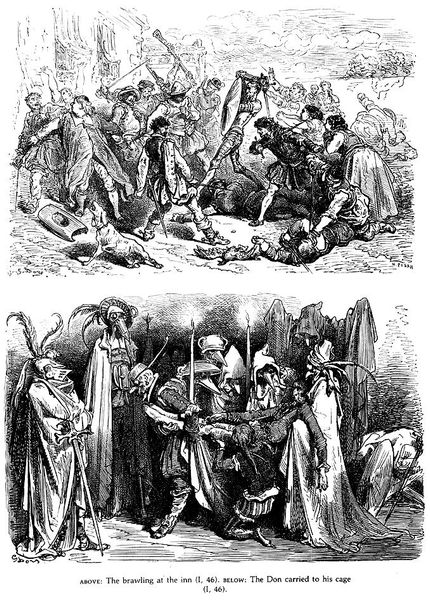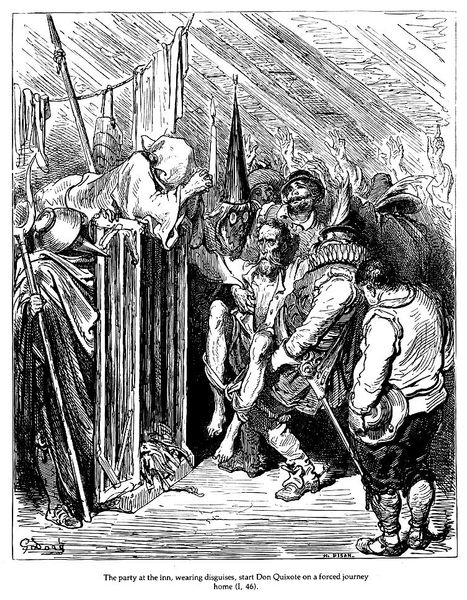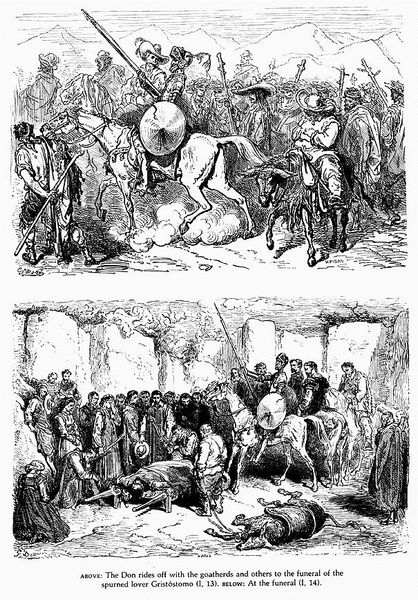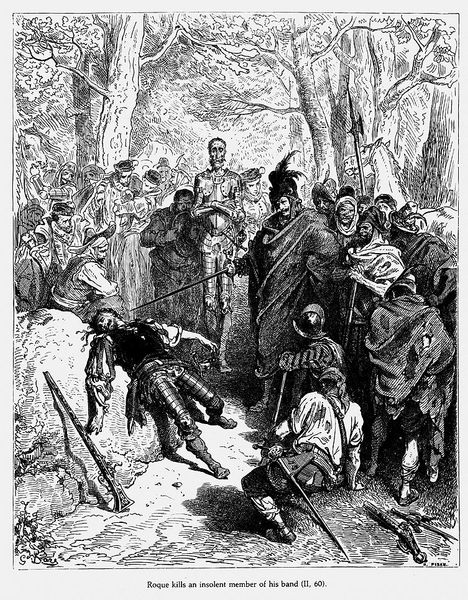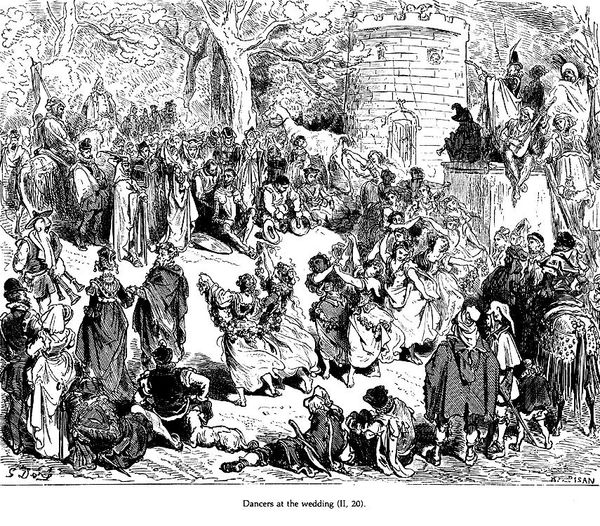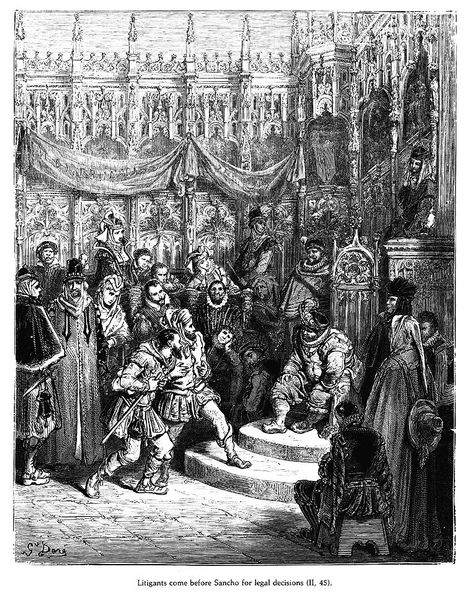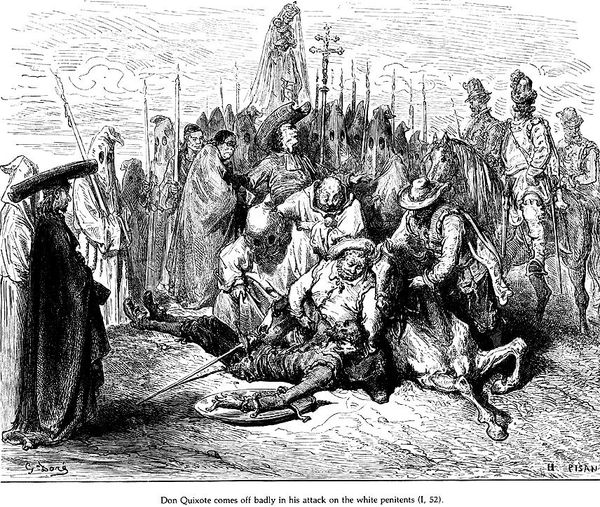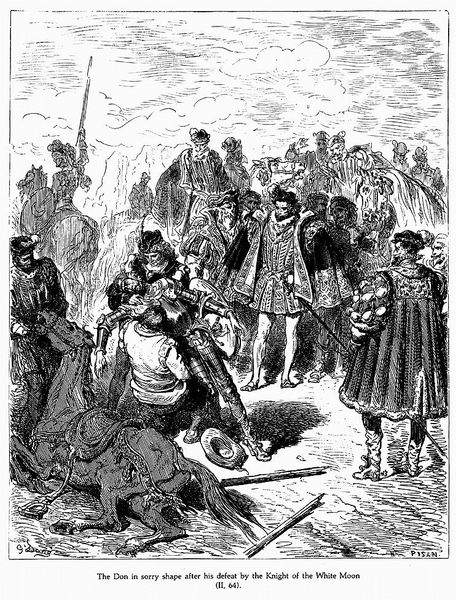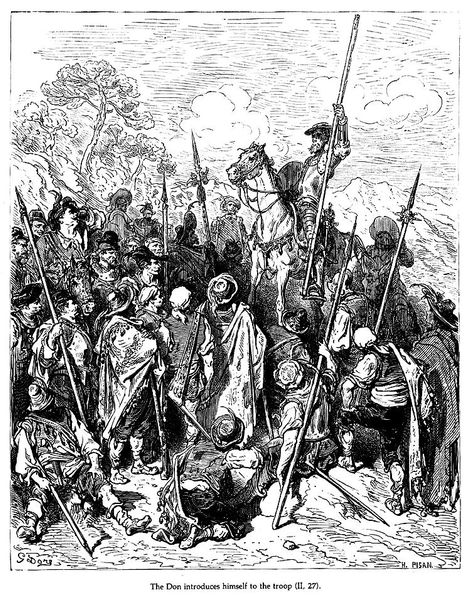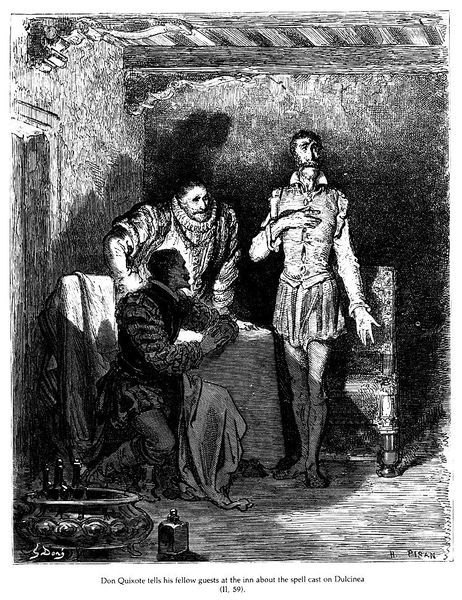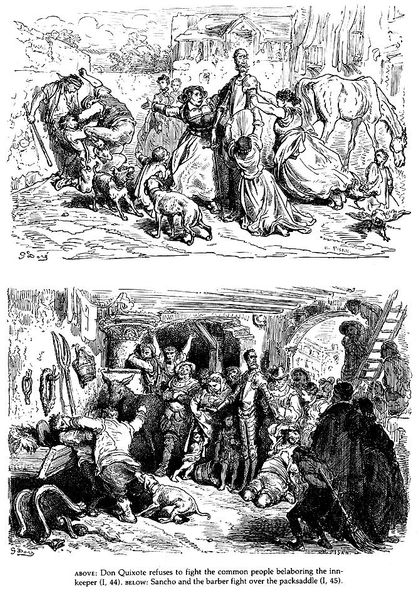
drawing, paper, ink, engraving
#
drawing
#
narrative-art
#
figuration
#
paper
#
ink
#
romanticism
#
line
#
history-painting
#
engraving
Copyright: Public domain
Curator: Here we have a drawing titled "Don Quixote," rendered in ink on paper by Gustave Doré. The composition is divided into two distinct scenes. What's your first reaction? Editor: Immediately, I notice the stark contrast in tone and setting between the upper and lower halves. The top scene, with its ornate bed and draped figure, feels intimate and melancholic, while the lower one, full of people and weapons, conveys a sense of tension or confrontation. Curator: That's insightful. Doré, a 19th-century artist, made numerous illustrations for classic literary works. These drawings gained immense popularity through print media, playing a significant role in shaping the public’s imagination of characters like Don Quixote. It is interesting that they used this medium and distribution technique for spreading ideals, ideas and literacy itself. Editor: Absolutely. Doré's work underlines how art democratized access to narratives and contributed to creating a collective visual culture. Looking at the lower scene, the girl dressed as a boy really intrigues me. Considering societal expectations, her choice could have had considerable political meaning in defying gender norms. Curator: Indeed, this could also be related to cross-dressing bans and related laws. This brings to question power, and justice. Editor: It makes me consider how individuals challenged social structures through self-expression. Curator: What also becomes obvious is that there is class at play. Just note the setting, furniture, attire and status for each frame. One is indoors, in private; another is outside, public with a big group and possible danger or repercussions to what may ensue. Editor: This medium allows us to look deeply into this type of issue that is important when trying to create equality. These illustrations underscore art’s role in reflecting society’s evolution while advocating for inclusivity. Curator: Well, considering our conversation today, I see now how Gustave Doré's narrative work highlights both socio-political discourse and historical realities of marginalized communities. Editor: It also underlines how art can amplify their struggles, inspiring activism while simultaneously influencing future perspectives.
Comments
No comments
Be the first to comment and join the conversation on the ultimate creative platform.
